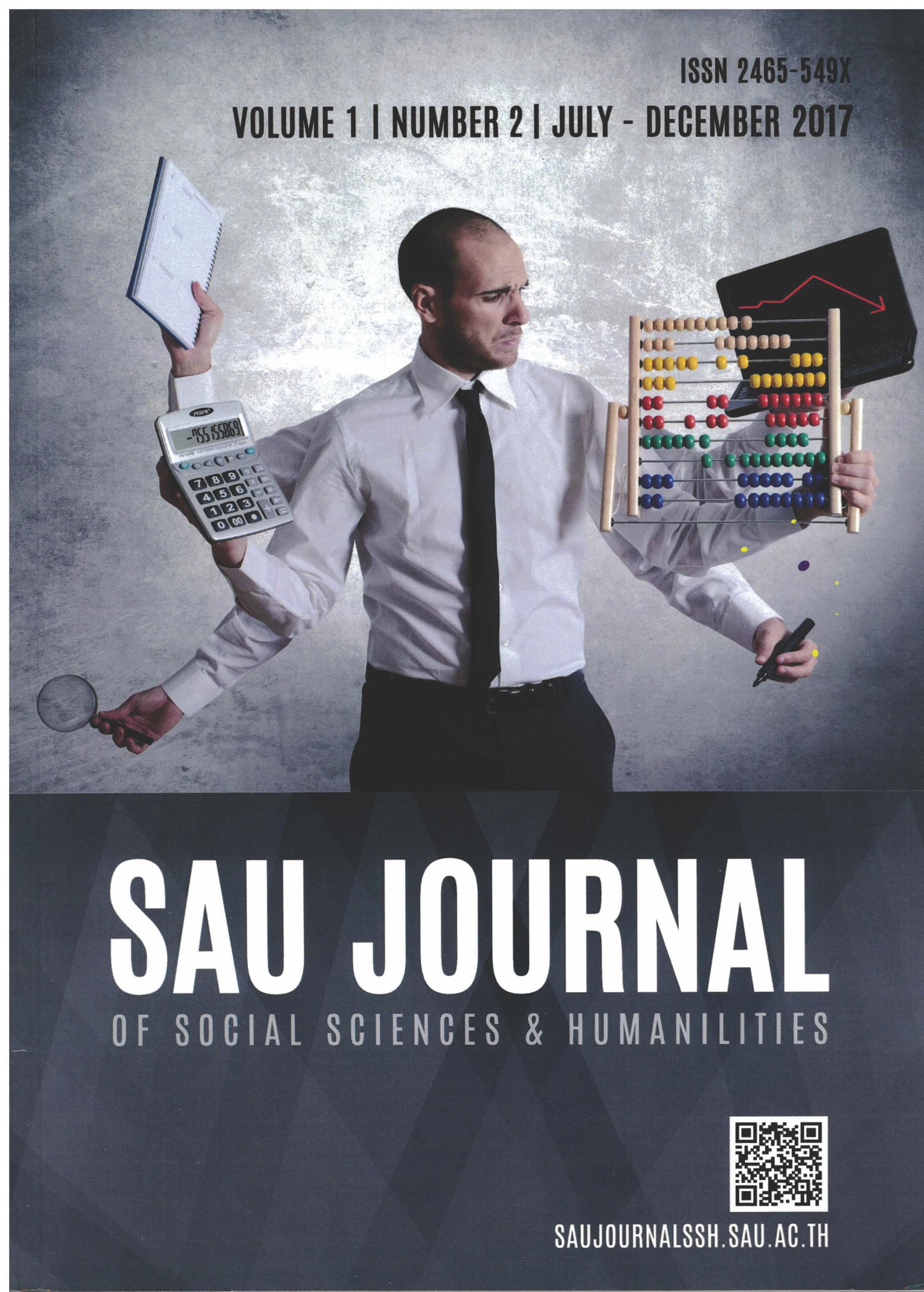อิทธิพลของอารมร์ผู้ใช้งานในฐานะเป็นปัจจัยที่เชื่อมโยงความพร้อมด้านเทคโนโลยีสู่ความตั้งใจซื้อสินค้าของกลุ่มผู้บริโภคผ่านระบบออนไลน์
คำสำคัญ:
ความพร้อมด้านเทคโนโลยี, อารมณ์ผู้ใช้งาน, ความตั้งใจซื้อสินค้าบทคัดย่อ
การศึกษาครั้งนี้มีวัตถุประสงค์เพื่อ (1) ศึกษาความพร้อมด้านเทคโนโลยี อารมณ์ผู้ใช้งาน และความตั้งใจซื้อสินค้าของกลุ่มผู้บริโภคผ่านระบบออนไลน์ และ (2) ศึกษาอิทธิพลของอารมร์ผู้ใช้งานในฐานะเป็นปัจจัยที่เชื่อมโยงความพร้อมด้านเทคโนโลยีสู่ความตั้งใจซื้อสินค้าของกลุ่มผู้บริโภคผ่านระบบออนไลน์ งานวิจัยนี้เป็นการวิจัยเชิงปริมาณ (quantitative research) ด้วยวิธีการวิจัยเชิงสำรวจ (survey research) กับประชากร กลุ่มตัวอย่างที่ใช้ในการวิจัย คือ กลุ่มผู้บริโภคผ่านระบบออนไลน์ จำนวน 500 ตัวอย่าง เครื่องมือที่ใช้ในการวิจัยเป็นแบบสอบถาม มีการตอบกลับครบทุกฉบับ สถิติที่ใช้ในการวิจัย คือ วิเคราะห์ด้วยค่าร้อยละ ค่าเฉลี่ย ค่าส่วนเบี่ยงเบนมาตรฐาน และการวิเคราะห์สมการโครงสร้างโดยใช้โปรแกรม PLS Graph 3.0 ผลการวิจัย พบว่า ความพร้อมด้านเทคโนโลยี อารมณ์ผู้ใช้งาน และความตั้งใจซื้อสินค้าของกลุ่มผู้บริโภคผ่านระบบออนไลน์มีค่าเฉลี่ยรวมอยู่ในระดับมาก ส่วนผลการวิเคราะห์ตัวแบบสมการโครงสร้างปัจจัยที่มีอิทธิพลต่อความตั้งใจซื้อสินค้าของกลุ่มผู้บริโภคผ่านระบบออนไลน์ พบว่า อิทธิพลของอารมร์ผู้ใช้งานด้านความปิติยินดีและการมีอำนาจควบคุมเป็นปัจจัยคั่นกลางที่เชื่อมโยงความพร้อมด้านเทคโนโลยีสู่ความตั้งใจซื้อสินค้าของกลุ่มผู้บริโภคผ่านระบบออนไลน์ แต่อิทธิพลของอารมร์ผู้ใช้งานด้านความเร้าใจไม่เป็นปัจจัยคั่นกลางระหว่างความพร้อมด้านเทคโนโลยีกับความตั้งใจซื้อสินค้าของกลุ่มผู้บริโภคผ่านระบบออนไลน์
References
[2] สำนักงานสถิติแห่งชาติ. (2557). การสำรวจสถานภาพพาณิชย์อิเล็กทรอนิกส์ของประเทศไทย พ.ศ. 2556, ค้นเมื่อ 13 เมษายน 2559, จาก http://www. nstda.or.th/pub/2014/20140702-status-ict-status-ecommerce.pdf
3] Chin, W. W. (2001). The partial least squares approach to structural equation modeling. In G.A. Marcoulides (Ed.), Modern methods for business research. Mahwah, NJ: Lawrence Erlbaum Associates.
[4] Comrey, A. L., & Lee, H. B. (1992). A first course in factor analysis. Hillsadle, NJ: Lawrence Erlbaum Associates.
[5] Hsieh, J.-K., Hsieh, Y.-C., Chiu, H.-C., & Yang, Y.-R. (2014). Customer response to web site atmospherics: Task-relevant cues, situational involvement and PAD. Journal of Interactive Marketing, 28, 225-236.
[6] Kulviwat, S., Bruner, G. C., Kumar, A., Nasco, S. A., & Clark, T. (2007). Toward a unified theory of consumer acceptance technology. Psychology & Marketing, 24(12), 1059-1084.
[7] Lam, S. Y., Chiang, J., & Parasuramm, A. (2008). The effects of the dimensions of technology readiness on technology acceptance: An empirical analysis. Journal of Interactive Marketing, 22(4), 19-39.
[8] Lee, M. K. O., Shi, N., Cheung, C. M. K., Lim, K. H., & Sia, C. L. (2011). Consumer’s decision to shop online: The moderating role of positive information social influence. Information & Management, 48, 185-191.
[9] Madahi, A., & Sukati, I. (2012). The effect of external factors on purchase intention amongst young generation in Malaysia. International Business Research, 5(8), 153-159.
[10] Mangamari, E. E., Siomkos, G. J., Rigopoulou, I. D., & Vrechopoulos, A. P. (2011). Virtual store layout effects on consumer behavior: Applying and environmental psychology approach in the online travel industry. Internet Research, 21(3), 326-346.
[11] Mirabi, v., Akbariyeh, H., & Tahmasebifard, H. (2015). A study of factors affecting on customers purchase intention case study: The agencies of bono brand tile in Tehran. Journal of Multidisciplinary Engineering Science and Technology, 2(1), 267-273.
[12] Parsasuraman, A. (2000). Technology readiness index (TRI): A multiple-item scale to measure readiness to embrace new technologies. Journal of Service Research, 2(4), 307-320.
[13] Vahdati, H., & Nejad, S. H. M. (2016). Brand personality toward customer purchase intention: The intermediate role of electronic word of mouth and brand equity. Asian Academy of Management Journal, 21(2), 1-26.
[14] Yi, Y., Tung, L. L., & Wu, Z. (2003). Incorporating technology readiness (TR) into TAM: Are individual traits important to understand technology acceptance?. Diffusion Interest Group in Information Technology, 1, 1-27.





